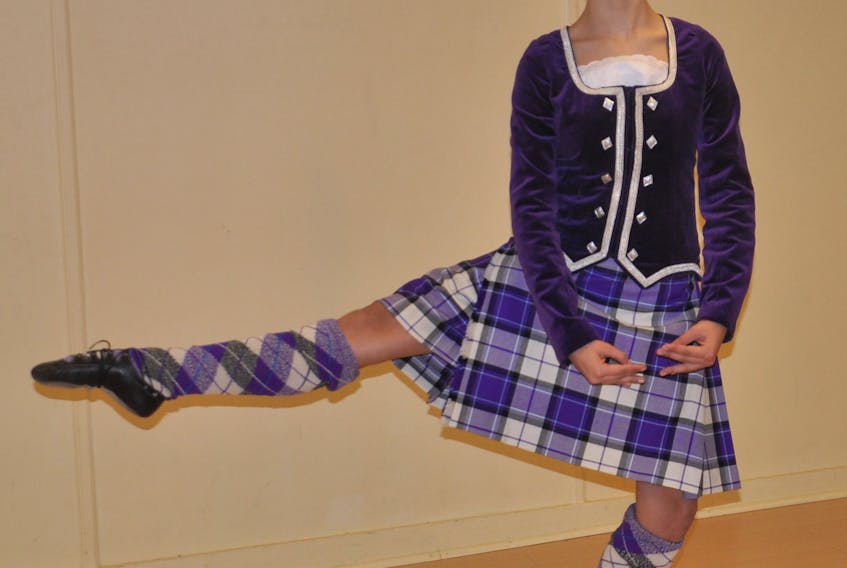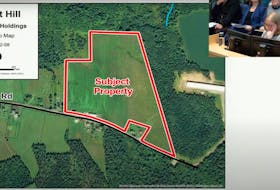Ainslie Salter, although modest about it, has a knack for highland dancing – a knack that is taking her big places as she continually improves her performance.
Salter, a student of the Brenda MacKay School of Dance, recently completed exams for the James L. McKenzie and Elspeth Strathern Scholarships in Vancouver, earning first place in one of four categories she participated in; second place in choreography – and a score of over 90 per cent in the written portion.
It was the second exam of its kind in which she participated. She was the only dancer from Pictou County to participate in that exam, which tested her proficiency in the theoretical, practical/competitive and the performance/choreographic aspects of highland dancing.
Salter’s achievement in that regard is significant – students who participate in the exam at the scholarship level need to be nominated. In Salter’s case, she was nominated for the high marks she made participating in theory exams taken in the fall of 2016.
Those who reach Salter’s level of proficiency in highland dancing are among some of the most talented dancers in their provinces – and they have a deep understanding of highland dancing that goes well beyond the act of dancing itself. Salter was one of two Nova Scotian dancers nominated – two out of over 400 registered dancers in the province.
Salter qualified for her second scholarship-level exams after performing exceptionally in theory on the technical aspects of dancing. Her first scholarship-level exam was in Moncton – an exam she admitted was a little daunting to her.
“It can be overwhelming,” said Salter, who added the trip to Vancouver was equally as exciting, but also pretty nerve-wracking. “I prepare for competitions and performances all at once – but it’s a fun experience.”
Salter said her favourite aspect of highland dancing is the competition, adding, “I like the feeling of being rewarded, when I do well in a competition, but also the opportunity of meeting new people at competitions, and travelling.”
Getting to Salter’s level in highland dancing requires that you “work for it,” with a steady, regular gauntlet of practice.
For most of the week, “or, at least a couple of days a week,” Salter engages in challenging, technical practice sessions, for many months at a time, as competitions such as the provincial and national championships approach.
“It’s a lot of stamina work, to improve that, and you have to run through the steps of what you’re learning,” said Salter.
Salter’s dance teacher Brenda MacKay said the work that practice entails is extensive, and “focuses on very tight technique, with very specific dance movements,” with an emphasis on repetition to get the movements perfected.
“There are a lot of pieces to dances, to perfect the movements,” said Salter.
Salter’s devoted practicing not only takes into account the physical aspect of dancing, but also the technical aspect, in theory. Salter has been working toward her teacher exams – the biggest, most theory-intensive exam in highland dancing.
Salter regularly participates in practical dance exams – something she’s been doing for six years – and has been doing theory exams for three years, MacKay noted.
“I compete with – and make friends with – a lot of top-class dancers. It’s very exciting to share the spotlight with some of these people,” said Salter.









